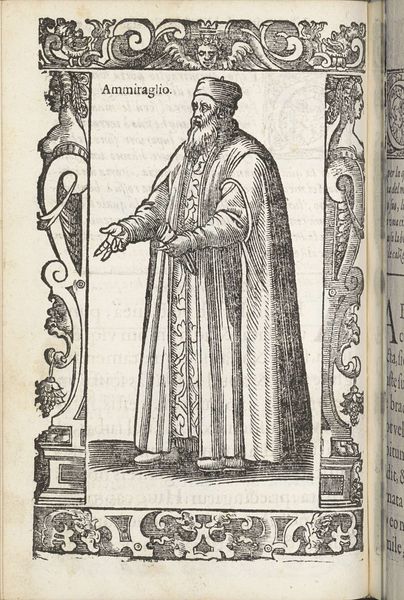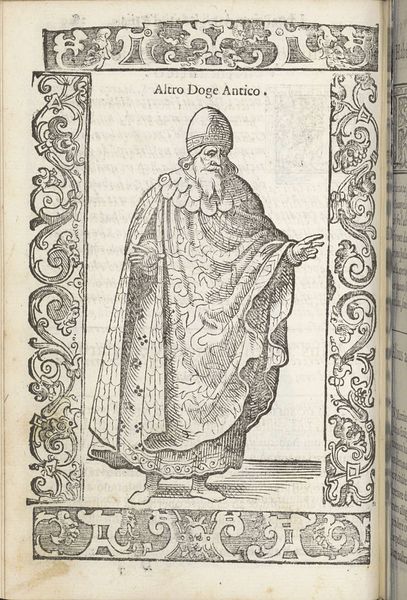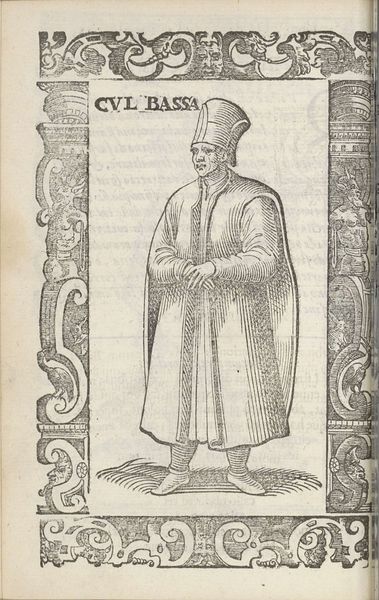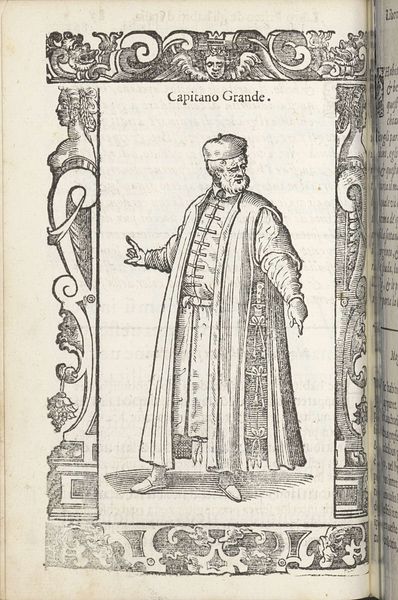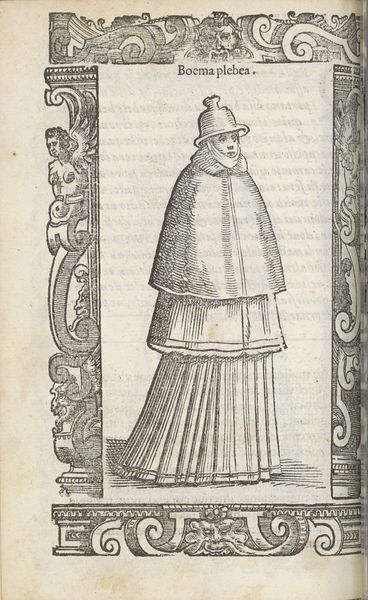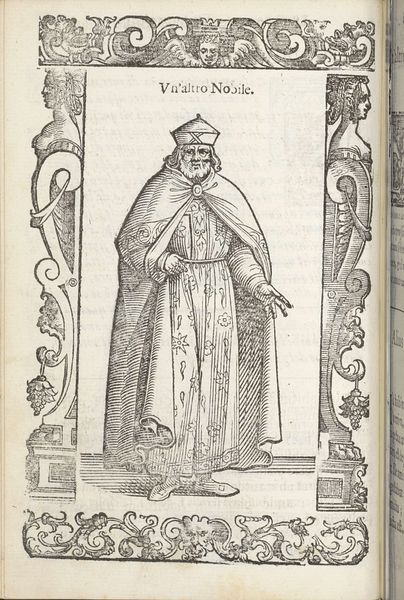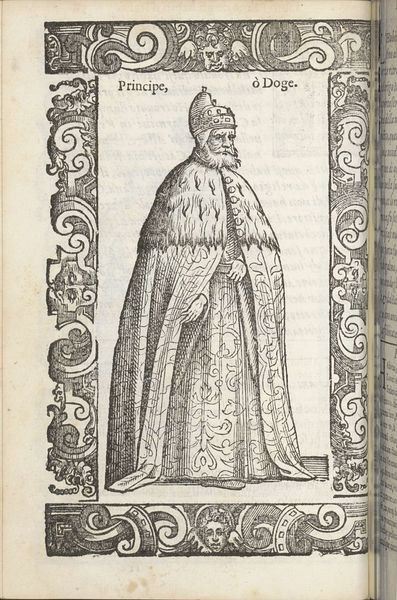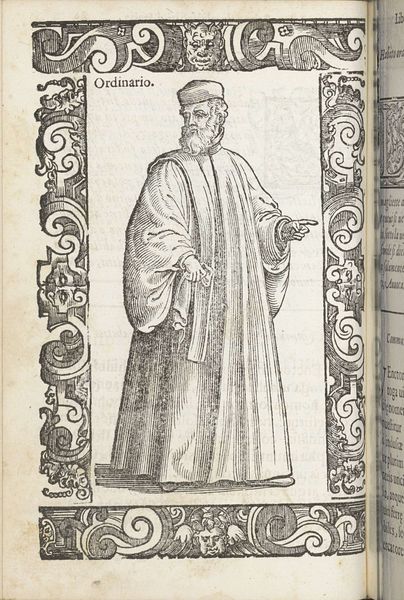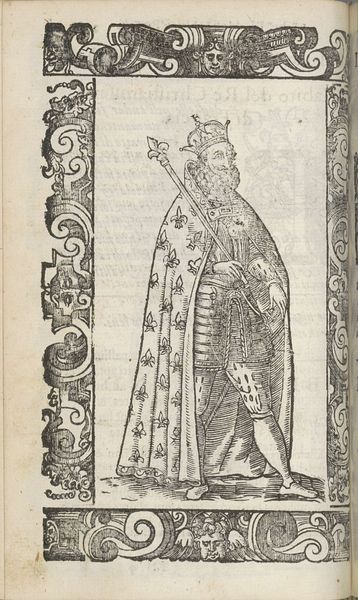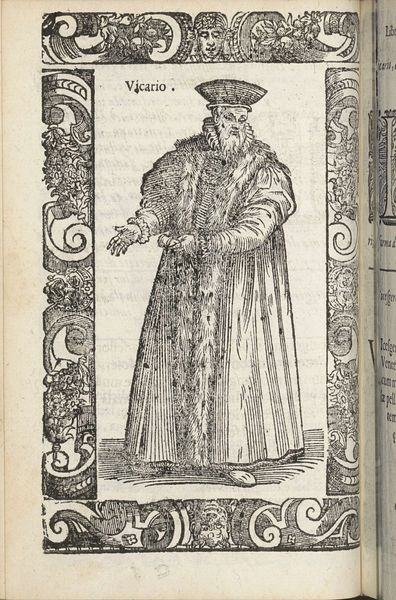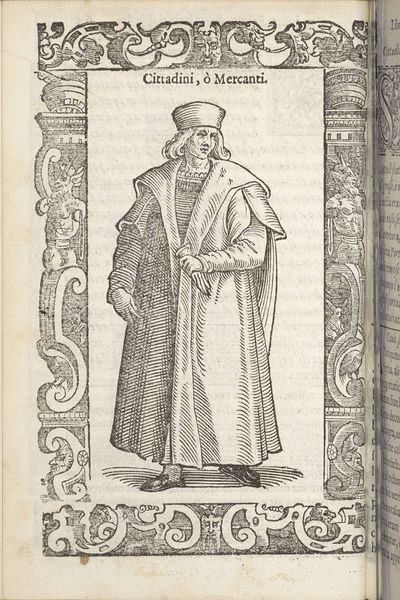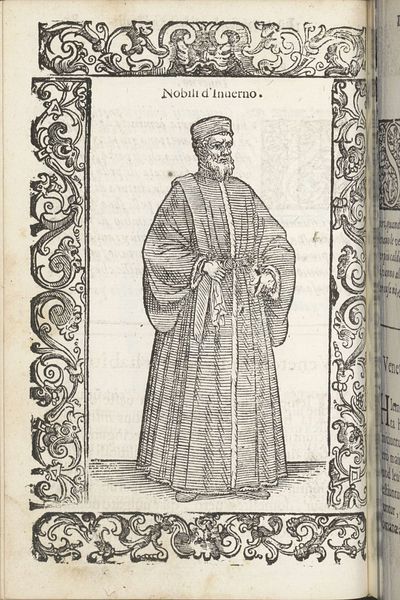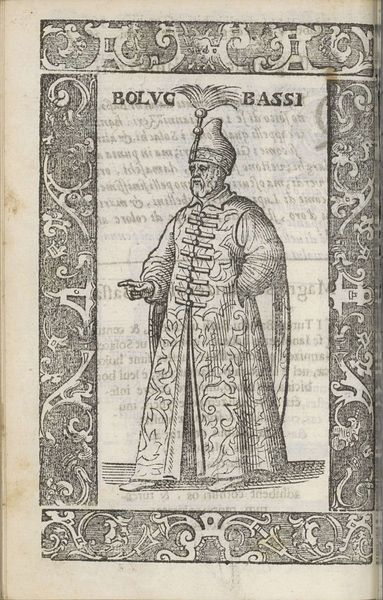
drawing, print, paper, ink, engraving
#
portrait
#
drawing
#
medieval
# print
#
figuration
#
paper
#
ink
#
italian-renaissance
#
engraving
Dimensions: height 167 mm, width 125 mm
Copyright: Rijks Museum: Open Domain
Curator: This print, made around 1598 by Christoph Krieger, is titled "De eerste Doge van Venetië" – "The First Doge of Venice." Editor: The overwhelming impression I get is one of authority. Look at the subject’s formal stance and elaborate, almost cumbersome, clothing. Curator: Indeed. This is an engraving, which means the image was incised into a metal plate and then printed, enabling multiple reproductions. Considering the era, this hints at a dissemination of power through visual representation. We should also consider the material process behind its creation: Krieger utilized a labor-intensive engraving process, making each print a product of significant craft. Editor: It also speaks volumes about identity construction and how the image of a leader is meticulously crafted. The Doge, as a symbol of Venetian power, is being presented through a very particular visual language. The detailed rendering of the clothing, the careful attention to his facial features, it’s all calculated to project a certain image. How might this image have impacted perceptions of Venice at the time? Curator: A key component here is the paper, the ground for both labor and visibility. The cost and accessibility of paper and printing determined who had access to knowledge and, in this case, representations of leadership. The act of disseminating prints like these became a powerful tool in shaping public opinion and solidifying a leader's image. Editor: And we have to address the ornamental framing, rich with symbolism no doubt, but equally functioning to reify power. Also, I can't ignore the 'whiteness' of this representation; the deliberate emphasis feels tied to constructions of race and privilege within European power structures. Curator: Precisely, focusing on the physical aspects helps us understand its societal reach. Now, prints are quite common, however, Krieger's focus was mostly on making art accessible for common folk. Editor: Agreed. Considering the labor involved in producing an engraving, and the material value associated with paper and ink, it certainly forces us to confront ideas around accessibility, power dynamics, and historical representation. Curator: Examining the materials—the ink, the paper, the engraving tools—helps us trace the path of its creation and distribution. We move from thinking about simply *what* it represents to consider *how* it came to be, and for whom. Editor: Exactly. Looking at it that way unveils the social and economic factors involved in the creation and consumption of such an image, disrupting notions of neutrality or objectivity. Curator: By observing those material facets we get a glimpse into the work of production, which exposes the labor value, as well as the economic significance in distributing artwork such as prints. Editor: So it’s not just a picture, but a loaded artifact carrying historical weight. Curator: A product of labor, yes.
Comments
No comments
Be the first to comment and join the conversation on the ultimate creative platform.
